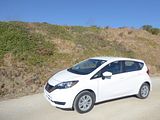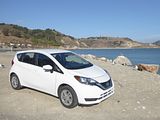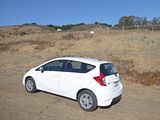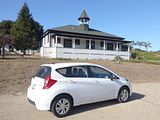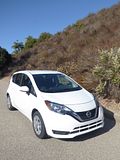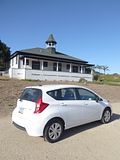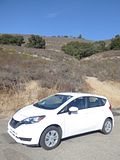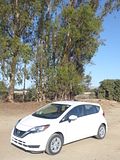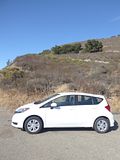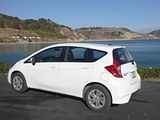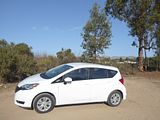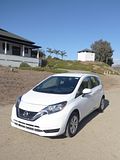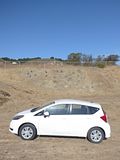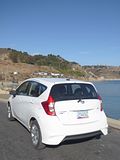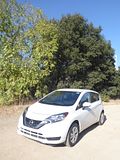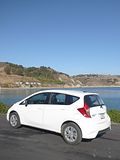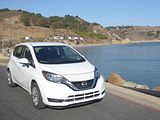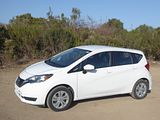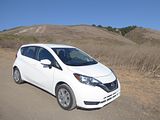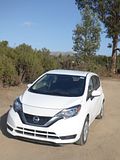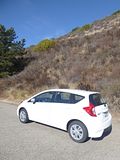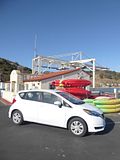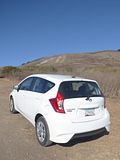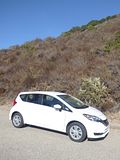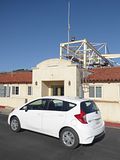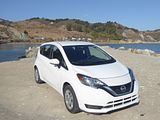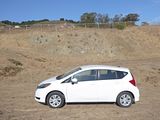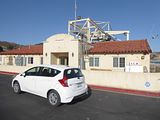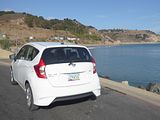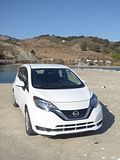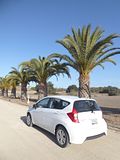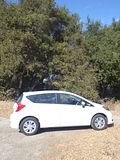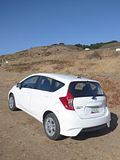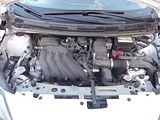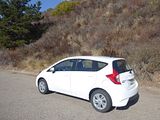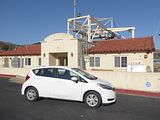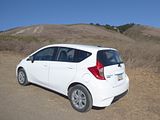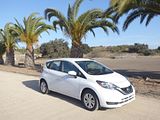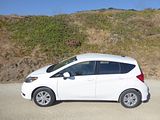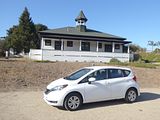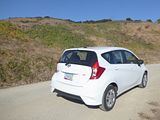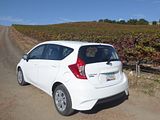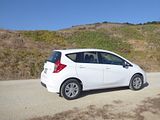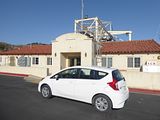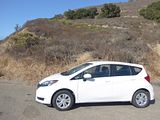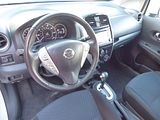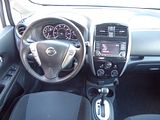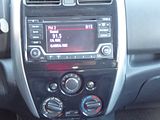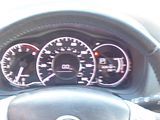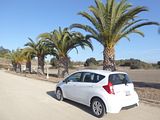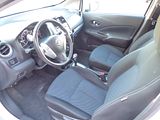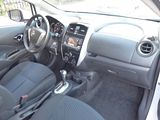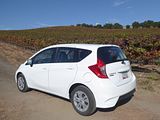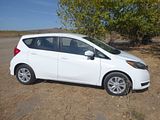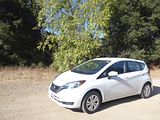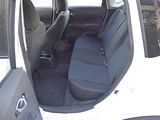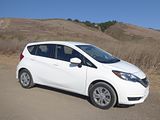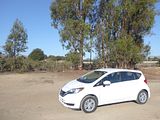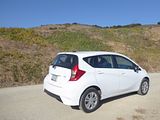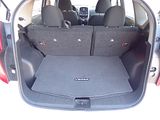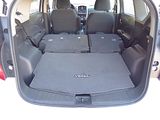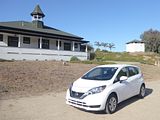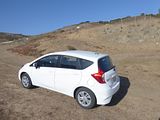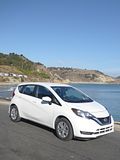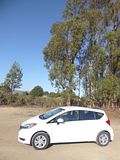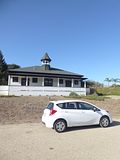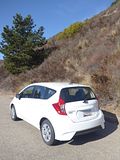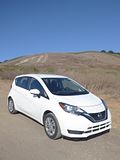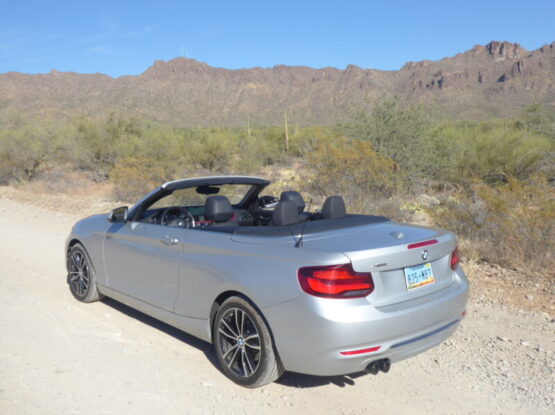Versa is the name used by Nissan in the US market to denote their smallest and cheapest cars. When first introduced, back in mid 2006, the Versa Sedan and Hatch cars were Mexican-built versions of a car that was sold in other major markets (but not the UK) as the Tiida. The cars found favour thanks to combination of a very low price and for being rather roomier than the other offerings at the very bottom of the market which were typically from the Fiesta/Yaris-sized B-segment. When it came to replacing these cars, Nissan took everyone somewhat by surprise in late 2011 by announcing not the next generation (C-12) Tiida, but a new saloon model that was a Mexican-built version of a car sold elsewhere in the world as the Sunny, Almera or the Latio, from a different line compared to the C-11 generation Tiida. We had to wait a little longer for a replacement for the original Versa Hatch and when the announcement came at the 2013 North American International Auto Show in Detroit, the car that was presented was effectively the second generation Note (E-12) that had been available in Japan and Europe for quite a while. The Versa Note, as they decided to call the car, went on sale later in 2013 as a 2014 model year. Nissan positioned the Versa as the true entry level car and wanted the Versa Note to be seen as something for the slightly less price-sensitive customer. Early reviews suggested that the car was sufficiently removed from the bargain-basement roots of its namesake and the car established its own niche in the US market, though it never troubled cars such as the Kia Soul in sales volumes. Nissan made the customary mid-cycle update to the Versa Note for the 2018 model year. Changes were mostly visual, with a styling update designed to bring the looks more in line with the rest of the range. A few minor changes were made inside such as enlarging the cupholders and moving the USB port and there was some shuffling of the trim and equipment, with the base level S model with manual transmission deleted from the range and the available trims simplified to just three versions, with a rarely seen basic S model still one of the cheapest cars on sale in America. Thankfully, Mr Hertz’ buyers decided that this version is an economy too far, and the cars that they have on fleet are mostly the mid spec SV version. It was one of these, a relatively high mileage 2018 model year car, that I had for a day to see how the facelifted Versa Note would rate.
All US market Versa Note cars come with a four cylinder 1.6 litre engine which generates 109 bhp. That’s not a lot even for a car of this size and that became quite apparent once underway. I frequently found the need to work the engine hard to get any meaningful acceleration. And doing that mean that things got exceedingly noisy. There is a constant thrum even when cruising at a steady speed, but once you are revving the car more, it gets really quite raucous. Much of the blame lies with the standard CVT automatic transmission, which was not one of the better examples of its type. It seemed to be particularly sluggish to catch up with what my right foot was up to. Fortunately, road and wind noise are quite well suppressed. Even when worked hard, performance is on the leisurely side, which you will need to remember when spotting gaps in the traffic. I took this Versa Note a long way, largely in quest of some decent weather, which, as you can see from the photos, I did find, well north of Santa Barbara. That means that I covered a total of 455 miles in one day. The car required 12.8 gallons to fill it, which calculates to 35.54 mpg US or 42.45 mpg Imperial which is a reasonable result but not stellar, probably a result of that ill-matched engine and gearbox. Interestingly, with the exception of a significantly better fuel economy result, my observations this time around are far more critical of the car than I was when I last sampled a 2016 model year car in early 2017.
The other aspects of the driving experience were generally acceptable if rather unremarkable. The steering was very light lacking much in the way of feedback as to what the wheels were going to do. There is plenty of grip but the handling is of the safe rather than fun sort, as befits a car of this type and there is some body roll and understeer once you start to drive with some enthusiasm. More to the point, perhaps, the Versa Note rides well, thanks partly I am sure to the relatively small 15” wheels. The brakes worked well and you still get a pull-up handbrake fitted between the seats. All round visibility is good thanks to the upright and boxy styling and the generous glass area. There is now a rear-view camera, but judging the back of the car is quite easy anyway.
The dashboard did not appear to have changed from the last Versa Note I drove. Not surprisingly, perhaps, given the car’s price, it features lots of hard plastics and although the steering wheel in this SV trim is leather-wrapped, it felt particularly cheap. The dash itself is in a boxy style which seems apposite for this boxy sort of car. Within the curved instrument binnacle, there are three overlapping recessed dials covering a revs counter, a central speedometer and one which combines fuel level and water temperature. There are two column stalks for indicators and wipers whilst the lights are operated from a rotary dial on the dash to the left of the wheel There are small cruise control and audio repeater buttons on the steering wheel boss. The centre of the dash contains what now looks like a very old school, traditional radio with a rear-view camera recently added as this is now required on US market cars. It is a basic radio unit and had very poor sound quality and it also seemed to struggle with the FM signal in places where other cars do not. The unit does include XM Satellite radio (though the subscription to this was expired on the test car) and you still get a CD slot. Beneath this are old school knobs for the air conditioning system. It is all very easy to use, but many will think it does look rather old-fashioned compared to mode modern designs even in this sector of the market.
The seats are upholstered in the sort of rather nondescript and slightly unpleasant cloth, in two colours, that you find in just about all low-priced cars these days. They are adjusted manually. Only the driver gets the benefit of a height adjuster, though the seat belts are height adjustable for both front seat occupants. The steering wheel did telescope in and out as well as up and down. The seats themselves proved to be pleasingly comfortable, which was just as well given how far I drove this test car.
The rear of the Versa Note is spacious, thanks to that rather boxy styling, so whilst you do sit quite upright there is masses of headroom and even legroom should be sufficient for all but the longest of leg. The car is not really wide enough for three adults to fit comfortably across the rear seat. The rear doors open to almost 90 degrees, meaning it is particularly easy to get in and out. Evidence of the budget pricing of the car comes from the fact that there is just one map pocket or oddments. You need to upgrade to an SR trim model to get a central armrest.
There is also a generou sly sized boot. There is a false floor, so if this is in place, there is no load lip to contend with. Remove the floor panel, and locate it against the rear seat backrests and you gain quite a bit more depth, which you may find useful. Of course when the floor is in place there is plentiful under floor stowage to hide odds and ends. The rear seat backrests are asymmetrically split and simply drop down onto the rear seat cushions to create a much larger load bay, though the load platform is not flat. There is no load cover on this version of the Versa Note. Inside the cabin there are two gloveboxes, though the upper one is quite small and there are door bins for your bits and pieces as well as a pair of cupholders in the front of the centre console and another pair at the rear of it which rear seat passengers could just about reach.
The US market 2018 Nissan Versa Note hatchback is offered in three trim levels: S, SV and SR. All three are powered by the same 1.6-litre four-cylinder engine putting out 109 bhp and 107 lb/ft of torque, routed through a continuously variable automatic transmission (CVT) on the way to the front wheels. Standard feature highlights for the base S trim include 15-inch steel wheels, air conditioning, power mirrors, a tilt-only steering wheel, cloth upholstery, 60/40-split folding rear seats, Bluetooth phone integration, and a four-speaker CD player with auxiliary audio input. The SV trim adds remote keyless entry, cruise control, power windows and locks, upgraded gauges, additional interior trim, upgraded cloth upholstery, a height-adjustable driver seat with an armrest, a leather-wrapped steering wheel, an adjustable cargo floor, a 5-inch touchscreen display, a rearview camera, Bluetooth streaming audio, USB-iPod audio input, satellite radio and a hands-free text messaging assistant. The top-of-the-range SR trim adds such features as sporty exterior treatments, 16-inch alloy wheels, foglights, heated mirrors, a rear spoiler, remote keyless ignition and entry, a vehicle immobilizer system, Nissan’s Easy-Fill Tire Alert system (beeps when the correct pressure has been reached), a sport steering wheel, simulated suede upholstery and a centre rear armrest. Later in the model year, a rearview camera and a 7-inch touchscreen were added as standard equipment. Nissan refers to these as 2018.5 model year vehicles.
I concluded my 2017 review of the Versa Note with quite a positive statement, observing that this car was not just quite an improvement on the completely different Versa Sedan but was actually a perfectly acceptable economy car, with many virtues including lots of space and decent levels of quality and equipment, especially for the money. Whilst I concluded that it was probably not at the top of the class (I gave that accolade to the Korean duo of Hyundai Accent and Kia Rio), I thought a decent enough car that you should not necessarily eschew when offered one at the rental car counter. Perhaps it is an indication of how standards continue to rise, and also the fact that I drove this one rather further than that 2017 test car, but I handed this one back rather pleased to be doing so. For sure, the bargain price, compact dimensions yet a feeling of space will mean that those who want an urban runabout may feel happy with the latest Versa Note, but I don’t think it’s a car I could really recommend even for such driving demands, largely thanks to the gutless and raucous engine. Privately, it may be that Nissan agree, as it would appear that the car will be deleted at the end of the 2019 model year ad won’t be replaced in the US range.


